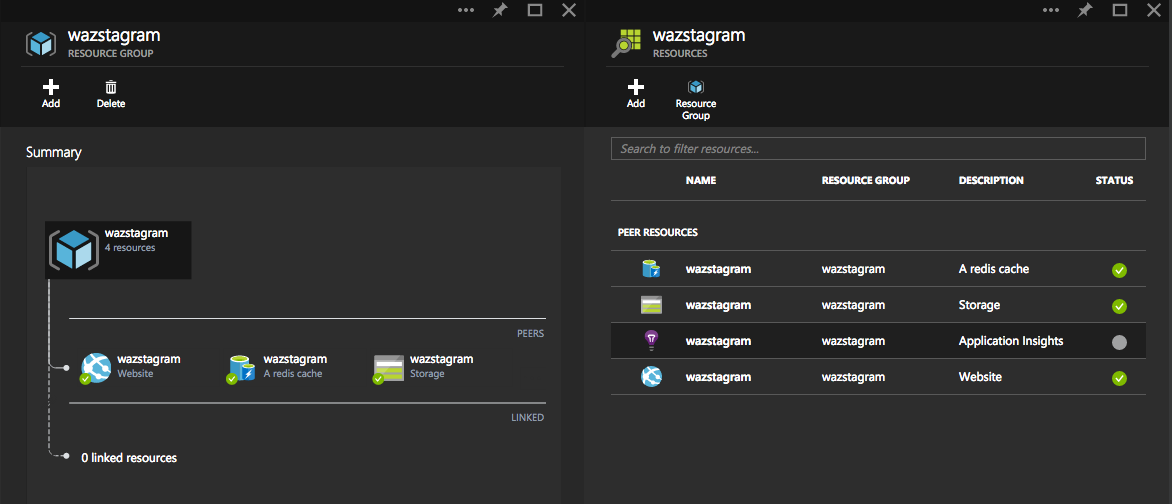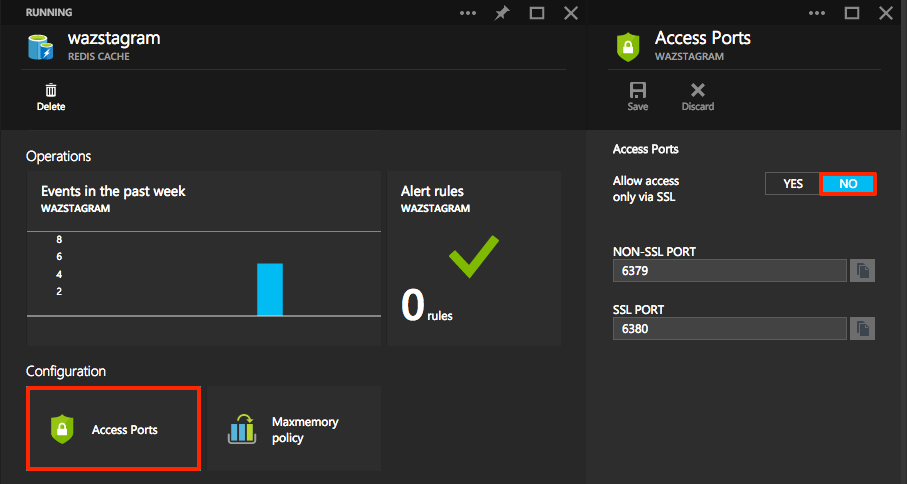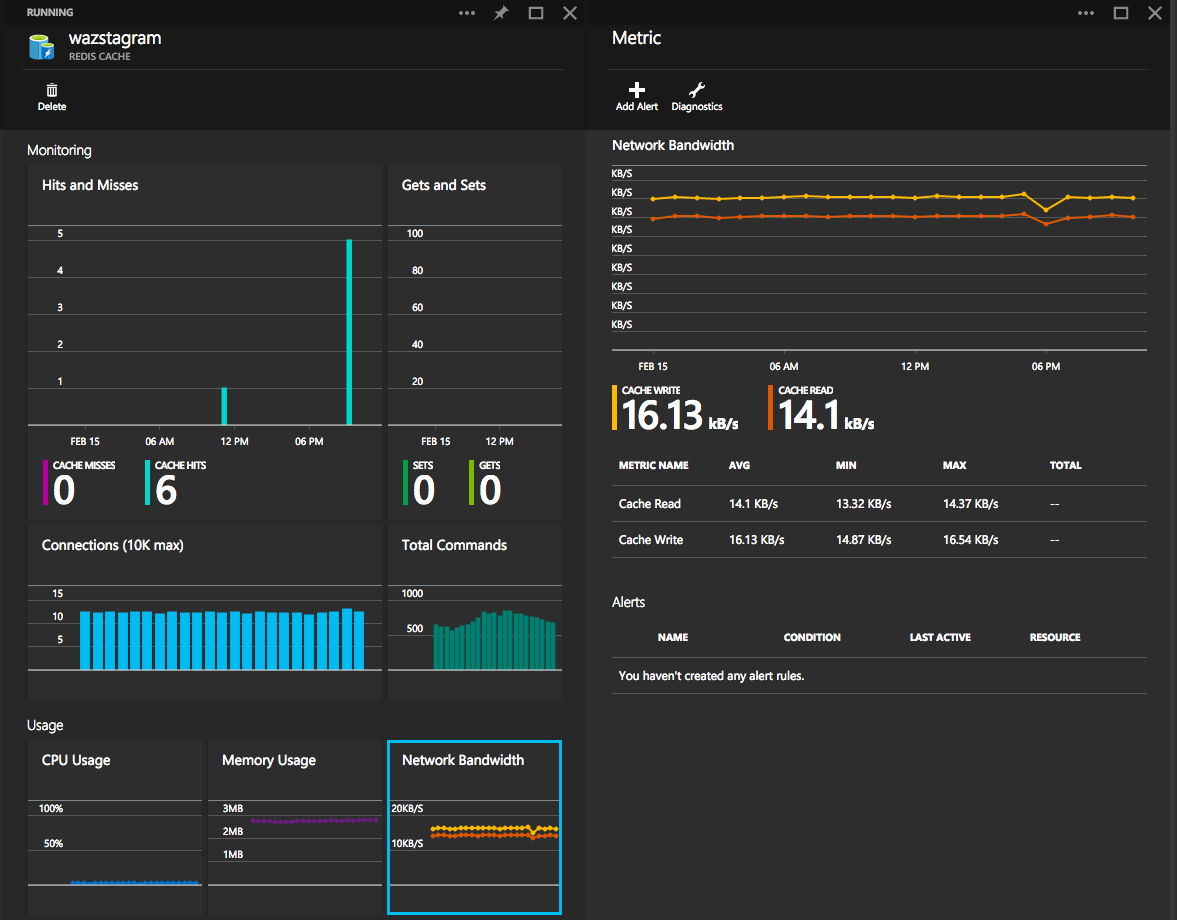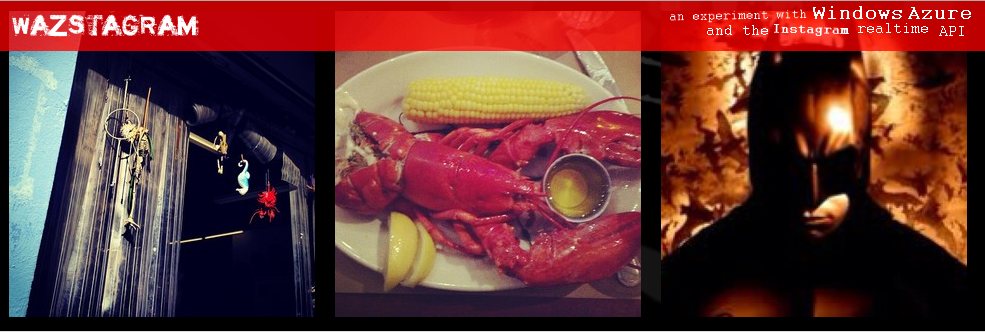A few years ago, I put together a fun little app that used node.js, service bus, cloud services, and the Instagram realtime API to build a realtime visualization of images posted to Instagram. In 2 years time, a lot has changed on the Azure platform. I decided to go back into that code, and retool it to take advantage of some new technology and platform features. And for fun.
Let’s take a look through the updates!
Resource groups
I’m using resource groups to organize the various services. Resource groups provide a nice way to visualize and manage the services that make up an app. RBAC and aggregated monitoring are two of the biggest features that make this useful.

Websites & Websockets
In the original version of this app, I chose to use cloud services instead of Azure web sites. One of the biggest reasons for this choice was websocket support with socket.io. At the time, Azure websites did not support websockets. Well… now it does. There are a lot of reasons to choose websites over cloud services:
- Fast continuous deployment via Github
- Low concept count, no special tooling needed
- Now supports deployment slots, ssl, enterprise features
When you create your site, make sure to turn on websockets:

io.js
io.js is a fork of node.js that provides a faster release cycle and es6 support. It’s pretty easy to get it running on Azure, thanks to iojs-azure. Just to prove I’m running io.js instead of node.js, I added this little bit in my server.js:
logger.info(
`Started wazstagram running on ${process.title} ${process.version}`,
);
The results:

redis
In the previous version of this app, I used service bus for publishing messages from the back end process to the scaled out front end nodes. This worked great, but I’m more comfortable with redis. There are a lot of options for redis on Azure, but we recently rolled out a first class redis cache service, so I decided to give that a try. I’m really looking to use two features from redis:
- Pub / Sub - Messages received by Instagram are published to the scaled out front end
- Caching - I keep a cache of 100 messages around to auto-fill the page on the initial visit
You can create a new redis cache from the Gallery:

After creating the cache, you have a good ol standard redis database. Nothing special/fancy/funky. You can connect to it using the standard redis-cli from the command line:

Note the password I’m using is actually one of the management keys provided in the portal. I also chose to disable SSL, as nothing I’m storing is sensitive data:

I used node-redis to talk to the database, both for pub/sub and cache. First, create a new redis client:
function createRedisClient() {
return redis
.createClient(6379, nconf.get("redisHost"), {
auth_pass: nconf.get("redisKey"),
return_buffers: true,
})
.on("error", function (err) {
logger.error("ERR:REDIS: " + err);
});
}
// create redis clients for the publisher and the subscriber
var redisSubClient = createRedisClient();
var redisPubClient = createRedisClient();
PROTIP: Use nconf to store secrets in json locally, and read from app settings in Azure.
When the Instagram API sends a new image, it’s published to a channel, and centrally cached:
logger.verbose("new pic published from: " + message.city);
logger.verbose(message.pic);
redisPubClient.publish("pics", JSON.stringify(message));
// cache results to ensure users get an initial blast of (n) images per city
redisPubClient.lpush(message.city, message.pic);
redisPubClient.ltrim(message.city, 0, 100);
redisPubClient.lpush(universe, message.pic);
redisPubClient.ltrim(universe, 0, 100);
The centralized cache is great, since I don’t need to use up memory in each io.js process used in my site (keep scale out in mind). Each client also connects to the pub/sub channel, ensuring every instance gets new messages:
// listen to new images from redis pub/sub
redisSubClient
.on("message", function (channel, message) {
logger.verbose("channel: " + channel + " ; message: " + message);
var m = JSON.parse(message.toString());
io.sockets.in(m.city).emit("newPic", m.pic);
io.sockets.in(universe).emit("newPic", m.pic);
})
.subscribe("pics");
After setting up the service, I was using the redis-cli to do a lot of debugging. There’s also some great monitoring/metrics/alerts available in the portal:

Wrapping up
If you have any questions, feel free to check out the source, or find me @JustinBeckwith.

